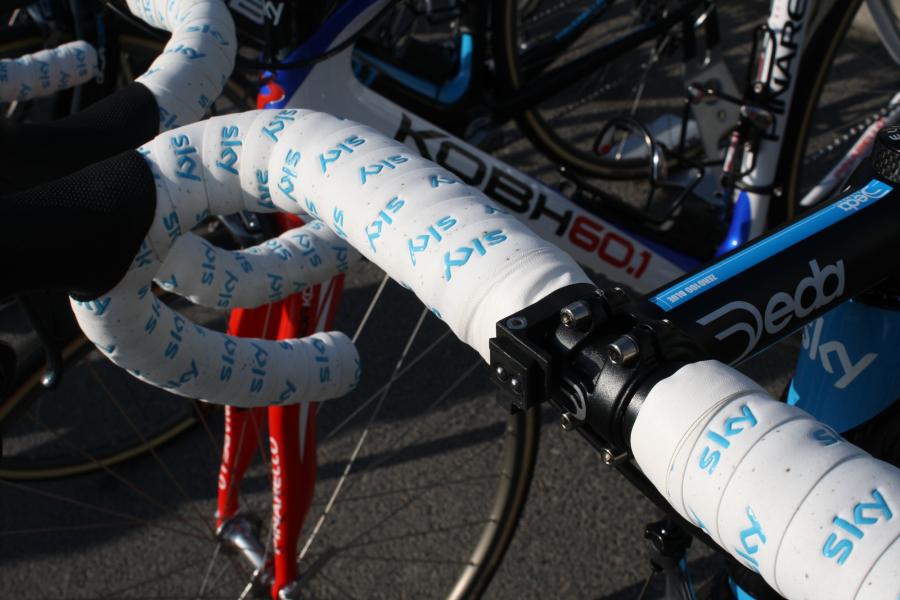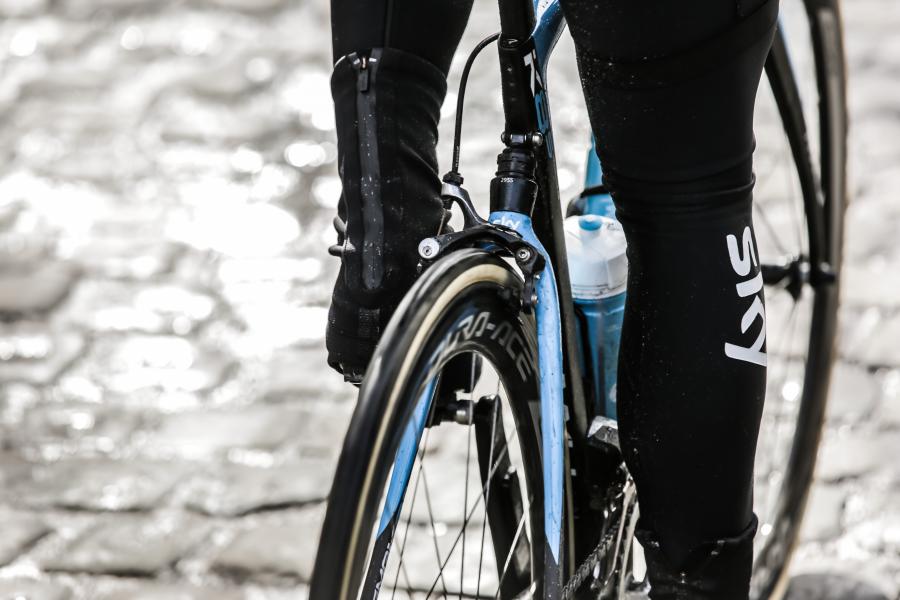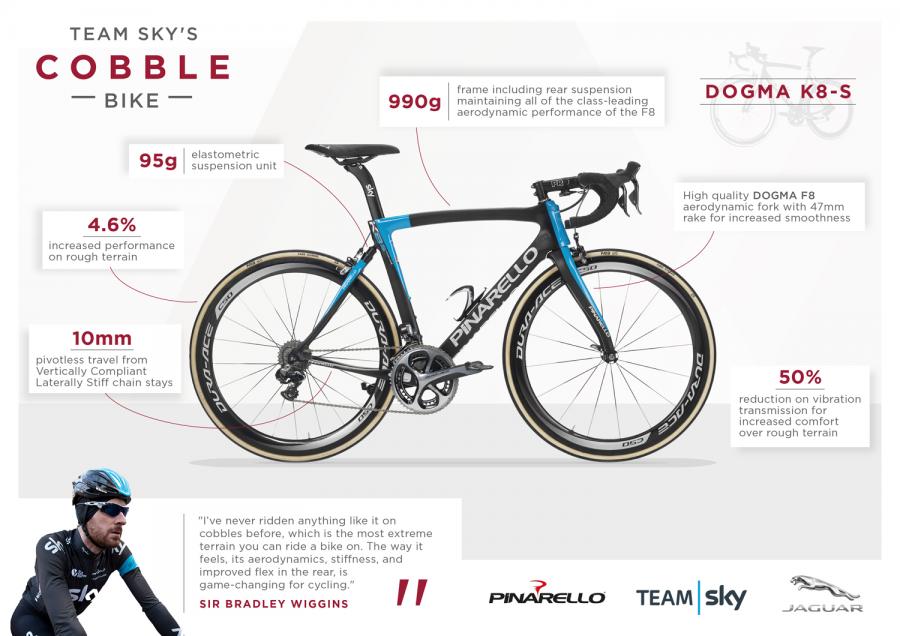- News
- Reviews
- Bikes
- Components
- Bar tape & grips
- Bottom brackets
- Brake & gear cables
- Brake & STI levers
- Brake pads & spares
- Brakes
- Cassettes & freewheels
- Chains
- Chainsets & chainrings
- Derailleurs - front
- Derailleurs - rear
- Forks
- Gear levers & shifters
- Groupsets
- Handlebars & extensions
- Headsets
- Hubs
- Inner tubes
- Pedals
- Quick releases & skewers
- Saddles
- Seatposts
- Stems
- Wheels
- Tyres
- Tubeless valves
- Accessories
- Accessories - misc
- Computer mounts
- Bags
- Bar ends
- Bike bags & cases
- Bottle cages
- Bottles
- Cameras
- Car racks
- Child seats
- Computers
- Glasses
- GPS units
- Helmets
- Lights - front
- Lights - rear
- Lights - sets
- Locks
- Mirrors
- Mudguards
- Racks
- Pumps & CO2 inflators
- Puncture kits
- Reflectives
- Smart watches
- Stands and racks
- Trailers
- Clothing
- Health, fitness and nutrition
- Tools and workshop
- Miscellaneous
- Buyers Guides
- Features
- Forum
- Recommends
- Podcast
TECH NEWS
Could this bike from Pinarello and Jaguar help Bradley Wiggins win Paris-Roubaix?
“Game changing.” That’s the verdict of Sir Bradley Wiggins on a new bike developed by Jaguar in partnership with Pinarello and Team Sky that he hopes will carry him to victory a week on Sunday over the cobbles of Paris-Roubaix, his final race for the British WorldTour outfit.
Unveiled today, the Pinarello Dogma KS-8 is claimed to bolster performance over rough terrain by 4.6 per cent, and to improve rider comfort by as much as 50 per cent.
If those figures are true, it’s not so much a marginal gain ahead of two of cycling’s toughest races, but potentially a huge one, should the claim prove true on the road.
The bike's unveiling comes during what is already turning out to be a very sucessful Classics campiagn for Sky, with Ian Stannard winning the Omloop Het Nieuwsblad for the second year running, and Geraint Thomas, pictured below, taking victory in the E3 Harelbeke and a podium place at Gent-Wevelgem last Sunday, where he finished third.

The launch of the bike, which will make its competitive debut at Sunday’s Tour of Flanders, is accompanied by an unsurprisingly gushing press release.
But is it really as innovative as Sky, Pinarello and Jaguar claim?
We’re not convinced.
Before we give our take, here’s what Sky and its sponsors have to say about it.
With a frame weighing in at 900 grams – that’s the claim, at least – the Dogma K8-S is pitched as the first road bike with a “bespoke lightweight suspension system and flexible flat carbon chain stays.”
It’s said to “create a pioneering suspension pivot in the rear triangle to ensure perfect riding comfort over rough terrains,” as well as cutting the fatigue of riders, as well as insulating them from bumpy road surfaces.
That last point should be particularly appreciated by Wiggins, who has sensitive hands, and rode with three or four layers of bartape at Paris-Roubaix in 2011.

He said of the bike: “From the moment you get on it, you realise the difference straight away, especially on the cobbles.
“I’ve never ridden anything like it on cobbles before, which is the most extreme terrain you can ride a bike on. The way it feels, its aerodynamics, stiffness, and improved flex in the rear, is game-changing for cycling.
“This is the first time anyone has gone out there, looked at the demands of the cobbles, and made a bike specifically for that job. It was really noticeable in testing between the guys on the K8-S to the others that weren’t."

Wiggins, plus team mates including Geraint Thomas and Ian Stannard, will ride the bike on Sunday, and he added: “It gives us lots of confidence and a huge advantage on the cobbles.
“The level of innovation and thinking outside the box, largely down to Team Sky and the automotive expertise from Jaguar, is streets ahead of other teams and manufacturers out there.”
Pinarello CEO Fausto Pinarello claimed the new bike could “reshape the world of road racing,” while Team Sky principal Sir Dave Brailsford described it as “ground-breaking.”
He said: “We’ve been able to knit together Pinarello's world class knowledge in bike design and Jaguar's industry-leading technological and engineering expertise, with a proven winning team of riders and experts in human performance, to come up with something truly ground-breaking.
“The Dogma F8 was the first real breakthrough of this partnership, and we’ve now taken it a step further.”
He described it as “a significant jump in terms of a bike's impact of performance. It’s rare for one small design innovation to make such a large difference. This is one of those situations.”
Brailsford added: “The Classics have been a big goal for us this season and with Ian Stannard’s win at Omloop Het Nieuwsblad and Geraint’s win at E3 we’ve had a great start.
“Anything can happen in these races, which makes them so exciting, but this bike will give us the best possible chance of continuing our success.”
That’s the PR angle, but here’s our take, from road.cc tech editor, David Arthur.
Pinarello and Team Sky are using phrases like “game-changing” and “pioneering” for the new Dogma K8-S road bike, but is it all that?
Well, no, not really.
The design is essentially a soft tail, a design of bicycle that relies on flex in the chain stays to provide vertical rear wheel travel, with a small damper located at the top of the seat stays.
Trek most famously developed a prototype bike that George Hincapie used in the 2005 Paris-Roubaix, and again in 2006 – when the steerer tube snapped, ending his race.
The system offered about 12mm of travel, not much, but enough to reduce the vibrations from riding over cobbles. There were no pivots, just enough flex in the carbon fibre rear stays.
Trek quietly phased that bicycle out before it was even made available for public consumption. A similar system was available in the Trek Pilot road bike, but used a different geometry to the race bike. On the mountain bike side the Trek STP was popular, at a time when mountain bike suspension was in its infancy.
Such bikes are still available, you can buy a Moots titanium road bike with a YBB soft tail option, which comprises a damper housed at the stop of the wishbone seat stays and, instead of pivots at the bottom bracket, relies on flex in the titanium chain stays to offer a small amount of rear wheel travel.
So the Pinarello Dogma K8-S takes an existing design and the critical thing will be how, and if, they have managed to make improvements in its application on a modern and lightweight road bike.
Most bike brands have been busy developing 'endurance' bikes designed to tame rough roads, from the extreme (Trek Domane, Specialized Roubaix) and the subtle (Cannondale Synapse, Bianchi Infinito, Giant Defy), but the new Pinarello is a step above those designs in actually employing suspension components, not just relying on flex or moving parts.
Latest Comments
- mark1a 1 hour 24 min ago
Still here, just showing a few signs of wear and tear. Hopefully still serviceable for some years to come.
- David9694 1 hour 26 min ago
Oxfordshire village building car crash near Witney...
- Secret_squirrel 1 hour 54 min ago
Has he fully recovered though, and will he ever?...
- Rendel Harris 2 hours 9 min ago
How can you know that you are "equally fearful" as "any female cyclist"? There is no possible way of quantifying such emotions and female cyclists...
- chrisonabike 2 hours 41 min ago
I think it would be fairer to blame the moon - as in "my client is a loony".
- Bungle_52 3 hours 4 min ago
Nice idea but Gloucestershire Constabulary are not interested as exemplified by this prvious NMOTD. Not only was there NFA for the close pass in...
- hawkinspeter 4 hours 36 min ago
I think black boxes are great for early detection of cognitive decline and/or sight problems. Someone's driving is going to become much less smooth...
- Bigtwin 5 hours 11 min ago
It's a fashion. https://guildford-dragon.com/shalford-driver-who-smashed-shalford-war-me...
- MTL Biker 5 hours 32 min ago
Robin Phans .....





Add new comment
39 comments
What about it?
Carbon fibre is used in many applications where its flexibility is an advantage.
What about chainstays material fatigue in the deforming areas?
not sure about the bike. Suspect some will feel it's an unfair advantage. It's all very clever and impressive nonetheless. We can't wait to see Brad in Scarborough end of day 1 Tour de Yorkshire. TP will be there in our lovely new trade tent. Hope to see you there.
Re: Adjustable damping on cars. This just modifies the damper behaviour and leaves the spring unaffected. Can be done in a number of ways, magneto-resistive fluids which change the viscosity of the fluid in the damper or by controlling a valve in the damper to change the fluid flow paths. The latter is similar to the manual damping adjustments common on mountain bike suspension systems.
Either way, on a bike such as those being discussed, anything more than a simple lock-out switch would probably be overkill.
Those Zertz inserts are pretty much established as bunk, and you couldn't really call those - or the isolated seat tube on a Domane - suspension in the truest sense.
Adjustable suspension is generally a self levelling hydro pneumatic system that needs a power source to pressurise the dampers, probably tricky keeping the weight down.
They're not bunk - they just don't do the job that most people think they do.
Well, those two are far and away, then most successful bikes in the classics in recent years.. and they bit feature suspension.
What intrigues me about this Pina - where Trek and Spesh have integrated the elestometric blocks within the frame, Pina have instead put in a socking great damper unit. Has me wondering - could it contain more than just a block of rubber?
I understand that some cars these days have the ability to alter the firmness of the suspension dampers while you are driving along - could something like this be possible in a road bike? (as in, make the suspension more complaint for the cobble section, and then firm it up again when the road is nice and smooth)
Will this help Team Sky stay upright on the (possible even wet?) cobbles?
Don't confuse Froome with the classics squad.
Thomas and Porte managed just fine on the wet cobbles last July while both Thomas and Wiggins both finished in the top 10 at Paris-Roubaix 2014. Eisel, Knees, Stannard and Rowe aren't afraid of the cobbles either.
Let's hope there's no breeze for Bradley's sake. Let's hope there is for G's.
I agree this is not new. However, materials change and sometimes a fresh look at an existing idea can make all the difference.
One factor not often discussed is the effect of vibration on fatigue. These are long, hard races. Standard bikes are stiff and not created with this kind of terrain in mind. A bike that gets its rider to the final few km less shattered could make all the difference.
One thing I am sure of is that Sky, Pinarello and Jaguar will be loving the acres of coverage this is getting.
After all this gushing PR they had better have a good excuse in the wings if a Sky rider doesn't win.
Check the 12 Jan 2004 citation in the link Dave - The Klein patent was filed under Trek due to brand ownership at the time.
I'll just leave this here http://www.google.co.uk/patents/US7591475
Interesting. Gary Klein had the Rêve out in 2004/2005, a road bike with a damper in the wishbone stays http://photos1.blogger.com/blogger/5269/171/1600/Klein%20Reve%20X.jpg
Having a quick scan of the patent, there may be wiggle room if the squidgy bit at the end of the wishbone is not spherical (or hemi-spherical). That appears to be the big thing in comparison to prior art at the time.
Seeing as the UCI are so anal that they have prevented riders riding because their seats were a degree or so off the horizontal wont they have something to say about this?
Well given some of the seemingly random and anal regulations, you'd have thought so, wouldn't you ?... but it seems like it's fully approved - application went in on the 5th March 2015 and it's in their current approved frame list (there's also the side of the UCI sticking it's head out of the seat tube on the fourth photo).
Is this the same Team Sky who stuck with the HM1K for a full season because the 65.1 wasn't proven technology?
Hmm, suspension has been used in these races before, as already mentioned:
http://www.pezcyclingnews.com/features/retrofile-roubaix-meets-dual-susp...
http://www.bikehugger.com/post/view/paris-roubaix-bicycles-freaks-on-parade
Surely when they are applying force onto the pedals the rear is going to flex thus loosing power?
And regain it as the stay straightens, OK some will be lost as heat, but it is negligible and I doubt it will outweigh the benefits of the rear wheel tracking better hence delivering a more consistent output where it matters, at the road tyre interface. Which is the main purpose of suspension in the 1st place.
Which is the reason Full Sus MTB's are the quickest point to point bikes you can buy.
Only if there is that much power keeping the chain taut. If the bike free wheels, then that power is lost.
I don't know whether the chainstays are hinged. It may be possible that the Paris-Roubaix riders are unhinged!
The best thing about this post is that my predictive text offered 'chainstays' and 'chainring' after 5 keystrokes!
They aren't hinged.
I suspect this must be part of Sky's deal with Pinarello. Why would they want to stick their necks out now saying they have a vastly superior bike to their competitors (unless it's to demoralise the opposition, I suppose)?
My guess is G's job will primarily be to look after Brad. A Wiggo win would be better PR for the Sky brand.
First softails I remember came out in the mid 90's but for mountain bikes. Never really understood the point of them for MTB's though.
Not sure who brought out the first softail road bike or when as it's tricky to lookup, you get a load of hits for motorbike softails. But they weren't going to say, yeah we know it old tech, were they.
you can get away with a fair degree of flex with a carbon (or steel, or titanium) stay without troubling the material's elastic limit. if you stay under that you can flex it indefinitely with no damage to the structure
I'm on the smoke and mirrors idea. Just imagine Wiggo, G, Stannard all together in the last 30km after rowe has been out in the break all day
Pages